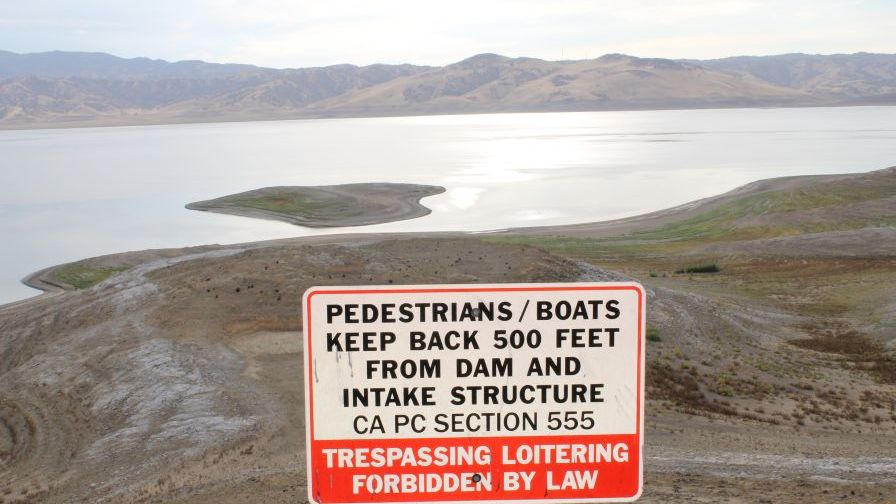California Drought Far From Over

As this view of the San Luis Reservoir shows, California’s drought is far from over. (Photo credit: David Eddy)
Despite nearly normal rainfall and snowpack during the 2015-2016 rainy season, California farmers and agribusinesses could face up to $1.5 billion in losses due to persistent drought conditions, according to a new bank report.
In “California Drought and its Economic Impact on Agriculture 2016,” CoBank posits the drought’s lingering effects will lead to another round of water restrictions for producers through the remainder of the growing year and beyond.
While Northern California saw the most precipitation during the rainy season, much of the state is still blanketed by severe drought, especially in the central and southern regions.
Government agencies in the state will again need to enforce water restrictions, allocating less than 60% of the state’s contracted water supplies. These restrictions will result in a 5% to 7% loss in net cash income for growers, ranchers, and agribusinesses across the state.
“Although California’s cities, rural communities, and farmland are less parched today than they were a year ago, water remains in short supply,” a vice president with CoBank’s Knowledge Exchange Division, Leonard Sahling, said. “While for some areas water allocations will be more than double last year’s amounts, growers will still fallow up to 350,000 acres this year.”
In addition to fallowing land, growers have several other options to offset water restrictions and drought effects, including pumping more of their groundwater stores, purchasing additional water from senior rights holders, increasing the use of crop insurance to mitigate risk and lost income, and shifting their crop mix in favor of crops that require less water.
“Some sectors will feel the effects of these water restrictions more so than others,” Sahling said. “Crops that yield the highest returns on investment, like permanent plantings of tree crops and vines, should be impacted the least. At the same time, we expect a large reduction in acreage for field crops that require significant amounts of water, including corn, wheat, cotton and alfalfa.”
For cattle and dairy farms, the biggest drought-related risk stems from potentially higher feed costs. “Fallowing decisions will affect the price and availability of locally grown feed ingredients,” Sahling said. “However, grain and feed prices have declined across the nation, mitigating this risk.”
Despite a projected reduction in farm income, Sahling said California’s ag sector remains strong enough to manage through another year of drought.
“Looking beyond this year, the outlook for California agriculture will depend on how much moisture the state receives, continued availability of groundwater and future regulations that impact access to surface and groundwater,” Sahling said.










